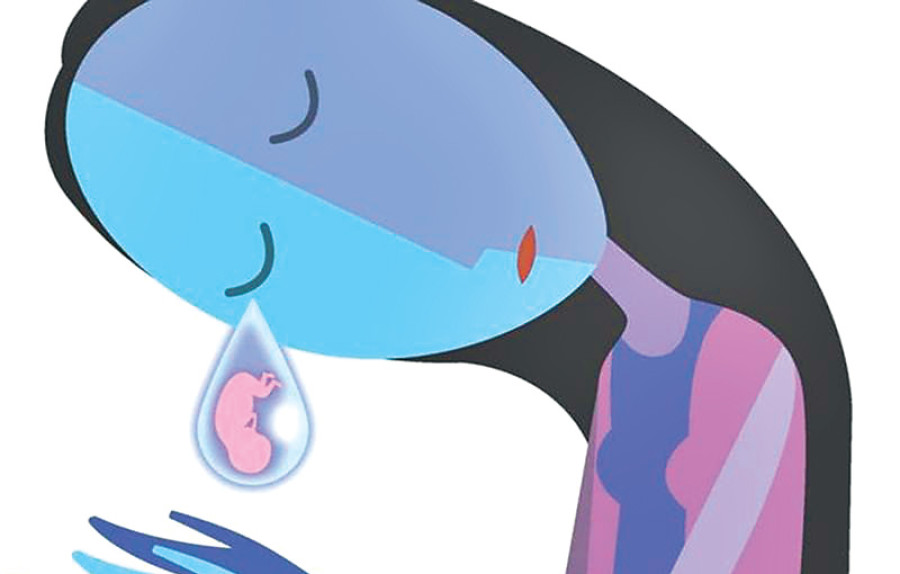Opinion
Cost-effective strategies
Several birth defects can be prevented by interventions before and during pregnancy
Dr Archana Amatya
Birth defects are a global problem but their impact is particularly severe in low and middle income countries. The World Health Organisation (WHO) has estimated that approximately 3-6 percent of infants worldwide are born with a serious birth defect of genetic or partially genetic origin. Birth defects are also known as congenital anomalies, and they can be structural or functional abnormalities, including metabolic disorders. Many of us have been affected by someone living with a birth defect: a friend, family member or neighbour.
Preventive measures
Five common serious birth defects of genetic or partially genetic origin are congenital heart defects, neural tube defects, haemoglobin disorders (thalassemia and sickle cell disease), down syndrome and glucose-6-phosphate dehydrogenase (G6PD) deficiency. A majority of newborns with a serious congenital disorder who survive face a lifetime of severe disability. These disorders can cause lifelong mental, physical, auditory or visual disability. Congenital disorders are also known to be associated with stillbirth and prematurity. The future of each child affected with a birth defect depends mostly on which organ or body part is involved, and how much it is affected. The expected lifespan of a person can be determined according to the severity of the defect.
There is a paucity of data on birth defects in low income countries owing to various factors such as poor health statistics and inadequate birth defect surveillance leading to underestimated figures. Not all birth defects can be prevented, however, some can be prevented by cost-effective interventions before and during pregnancy. Neural tube defect is a serious condition of the brain and spinal cord affecting more than 300,000 babies around the world. Many neural tube defects can be prevented by supplementation of folic acid, a micronutrient. If we can increase the global reach of folic acid fortification, an estimated 150,000 to 210,000 neural tube defects can be
prevented each year.
Another several hundred thousand babies are born with congenital disorders due to poor care in pregnancy, micronutrient deficiencies, infections and exposure to alcohol. It is important to understand that pregnant women need to visit their healthcare provider regularly. They should also take 400 micrograms of folic acid every day—they should start taking it prior to pregnancy if feasible. Pregnant women should also avoid alcohol, tobacco or drugs, and discuss the drugs to be continued if any are being taken. Since conditions like diabetes and obesity can increase the risk of developing birth defects, it is important to control them as well. The same feasible, cost-effective and evidence-based interventions that can end preventable maternal and newborn mortality can also end preventable maternal and child morbidities, including birth defects.
Evidence shows that effective interventions such as optimising women’s nutrition, family planning, avoiding maternal infections and managing maternal medical complications are both feasible and affordable for financially constrained health systems. In fact, increasing efforts to reduce birth defects will also contribute to the overall health of women, mothers, newborns and children. Care and prevention of birth defects has to be considered as a fundamental public health programme in order to save lives and reduce disability among women, newborns and children. The United Nations Secretary-General’s Global Strategy for Women’s, Children’s, and Adolescents’ Health include important targets for ending preventable maternal, newborn and child deaths. It is we who must work to ensure women’s right to quality health care and meet the Global Goal targets we have set for ourselves.
Response to birth defects
As far as the response to birth defects in Nepal is concerned, major national policies and plans have not fully addressed this issue. Efforts to prevent and manage birth defects have been partially integrated into ongoing reproductive health programmes. A five-year National Implementation Plan (2015-19) has been developed and a Birth Defect Technical Working Group has been formed. This national plan aims to establish a birth defects surveillance system and reduce major birth defects like neural tube defects, thalassemia births, congenital rubella and congenital syphilis besides strengthening appropriate services for management of children with birth defects.
Likewise, Nepal has been collecting information on birth defects from 16 hospitals in collaboration with WHO SEARO (South-East Asia Regional Office).
The main purpose of World Birth Defects Day is to increase awareness about birth defects. World Birth Defects Day 2017 envisions raising birth defects awareness through global networking to spread the message that birth defects impact millions of families and that a sustained focus is needed to support research, prevention, treatment and services.
Our goal in celebrating World Birth Defects Day is focused towards reducing stigma, creating awareness regarding birth defects and increasing opportunities for prevention. We should focus on improving the existing birth defects monitoring programmes and develop and strengthen birth registration and surveillance for birth defects. We should also continue research to identify causes—especially when they can be prevented and avoided to a certain extent—and develop national plans to implement effective interventions to prevent and manage birth defects.
Amatya is an obstetrician and gynaecologist




 24.47°C Kathmandu
24.47°C Kathmandu




.jpg&w=200&height=120)





